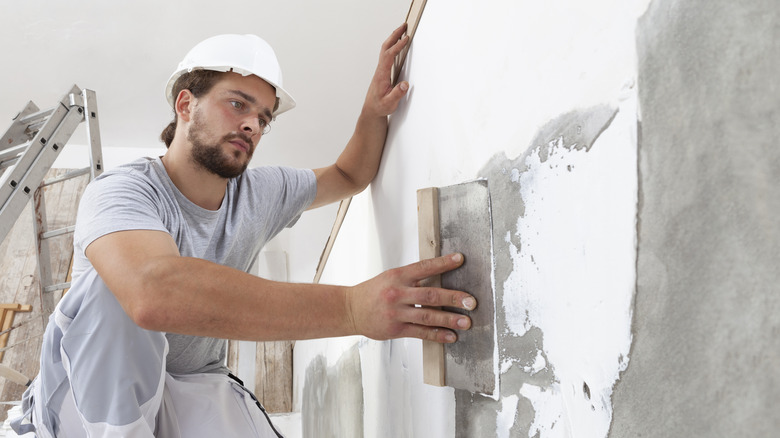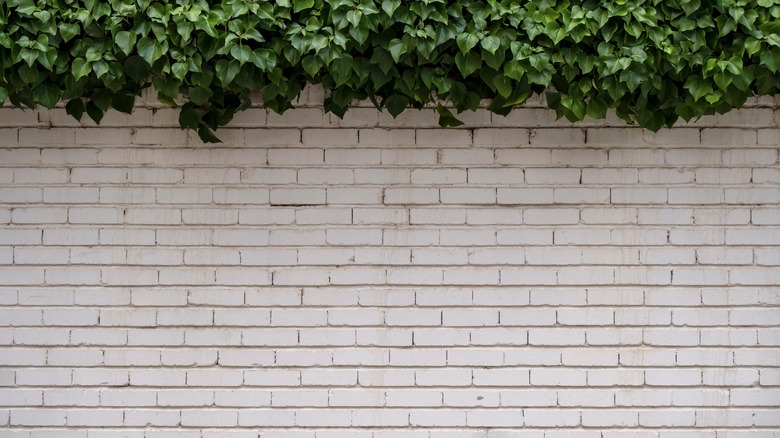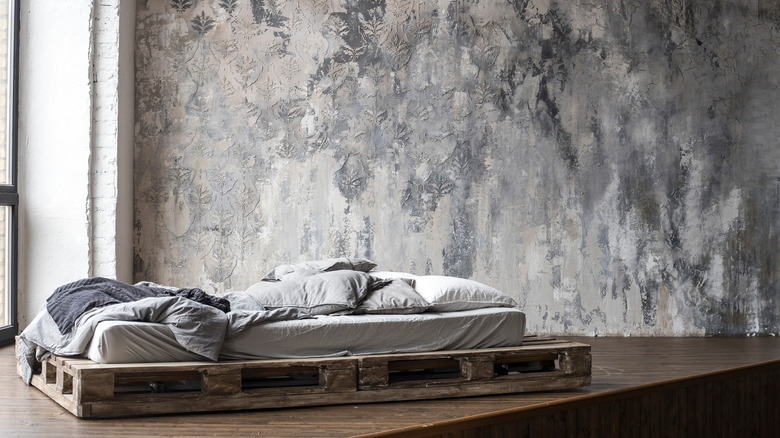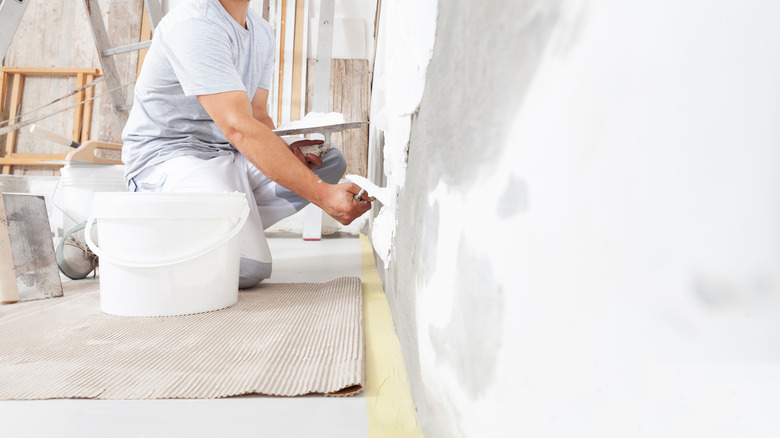Limewash, Venetian Plaster, Roman Clay: What's The Difference?
Stone-textured walls are a major trend this year, and for a good reason. The popularity of modern, sleek finishes is fading in favor of something more natural and cozy. And the rise of warm earth tones and organic décor elements is paving the way for a fresh foray into old-world style. Glossy, single-toned walls are being traded in favor of something that adds a bit more visual interest and depth, but there are a few methods you can use to create this look.
Limewash, Venetian plaster, and Roman clay are all used to achieve that classic, weathered texture. But despite creating similar effects, they all have unique qualities that mean they're better suited for different jobs, via The Casa Project. Slight changes in each formula can lead to differences in durability, final look, and necessary application methods. Nailing down exactly what product you need for your renovation can get a little tricky, so before you jump the gun and head to the home improvement store, it's best to break down the differences to determine what you need.
Limewash
Of the three options available, limewash creates the most subtle effect. According to Farmhouse Finishes, this product is a mixture of slaked lime, salt, mineral-based pigments, and water. It's typically used outdoors on wood or unfinished masonry and gives a textured, whitewash effect that mimics the look of an older home. It's perfect if you want to create an irregular, distressed finish on your brick or wood exteriors that doesn't trap moisture like typical paints.
Lime paint, however, has been developed for interior walls and gives off a more opaque but distinctive look. Because of the lime, it dries down to a matte finish and has slight natural variations in color. It's not the best option if you're looking for authentic, three-dimensional texture. Still, it usually comes in pre-mixed cans, and the application process is the same as regular paint, making it the most beginner-friendly option if you're planning to refinish your walls yourself.
Venetian plaster
When it comes to Venetian plaster, you have more flexibility with your final look. Instead of a liquid like lime wash or lime paint, this product is applied as a paste and includes crushed-up marble and lime to create a shiny, reflective look, via Gypsum Tools. Application methods vary, but traditionally, several coats of the product are layered over a primer, then smoothed out to mimic the look of a solid slab of marble.
Venetian plaster has been used for centuries, so naturally, there are quite a few options on the market with varying colors and levels of shine. Across the board, however, this product will likely create the boldest effect of the three options, so it's perfect if you're looking for a dramatic and luxurious statement. Unfortunately, the price tag is also a bit heftier than the other choices — the inclusion of real flecks of marble and the difficulty of the application make this an expensive transformation.
Roman clay
If Venetian plaster is a way to mimic the look of marble, Roman clay is a way to mimic concrete or stone. It's the happy medium between the two options — it still has a three-dimensional texture, but it's more subtle and natural looking than a marble-like sheen, via Portola Paints. It comes as a paste applied the same way as Venetian plaster and can be customized to fit your desired final product. Leave it unfinished for a matte, organic look, or seal it with a glossy top coat if you're still looking for a bit of shine.
If you want to switch up the look of your interiors, all options are fair game — it just depends on your desired look. For outdoor applications, however, the lime wash is your best option. The other choices aren't built to withstand the wear and tear of outdoor weather, but they still hold up well over time indoors and bring a fun texture to your space.



